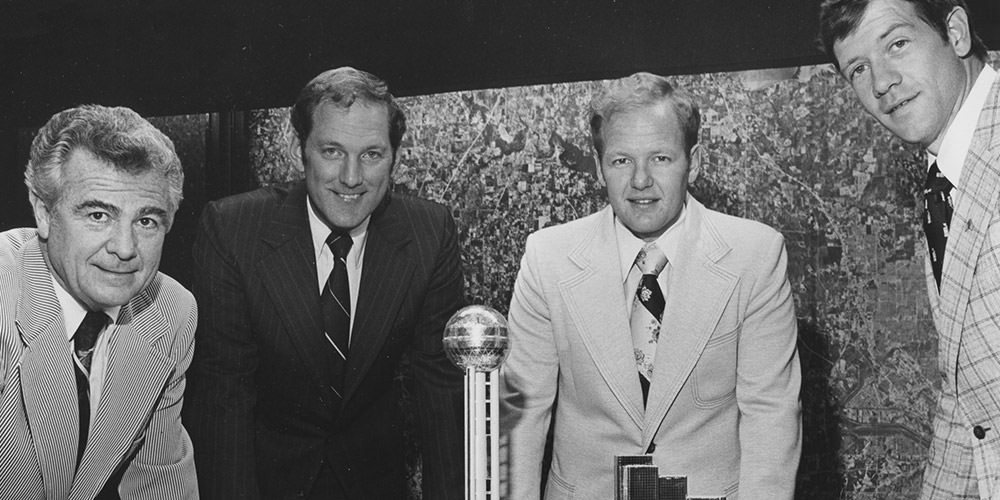A company rooted in relationship
When John Scovell and Ray Hunt met in 1971, a friendship was born. Soon after, Ray asked John to run his real estate company. It was a natural pairing and the beginning of an exciting business partnership. Since then, the Hunt family has invested in every Woodbine project for 44 years and counting.
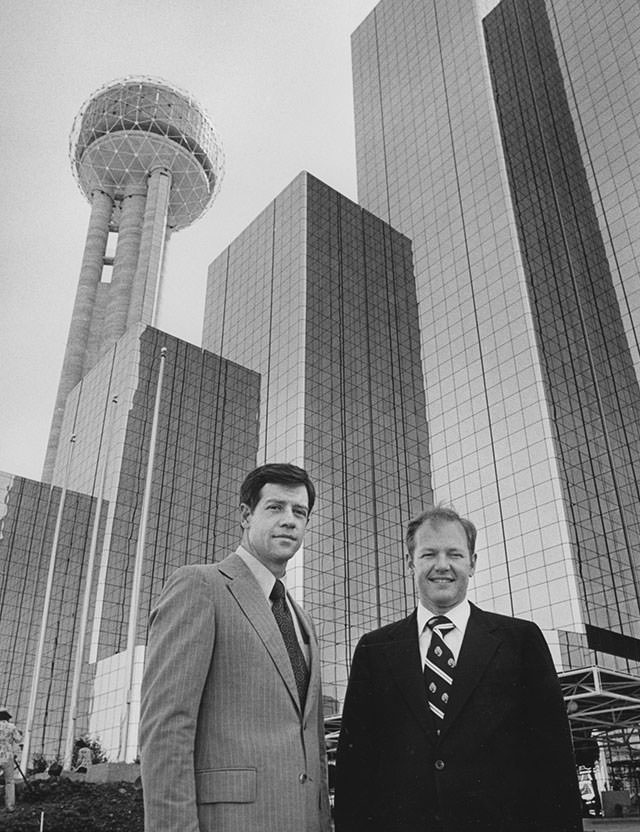
John Scovell (left) and Ray Hunt
The Woodbine Name and Hunt Oil Connection
In the heart of East Texas, 120 miles east of downtown Dallas, Woodbine Sand can be found at a depth of 6,000 feet. Often oil-bearing, this sand has played a profound role in the development of Dallas and the surrounding area.
The most famous oil field that depended on the Woodbine Sand as its primary reservoir was the fabled East Texas oil field. Upon discovery, it was the largest oil field in the world, with estimated initial recoverable oil reserves of 5.5 billion barrels.
The discovery well of the East Texas oil field was named the Daisy Bradford No. 3. Mr. H. L. Hunt purchased the discovery well and a number of oil leases that were thought to be non-prospective. However, those leases were later found to be located in strategic areas within the East Texas oil field, and they subsequently proved to be the foundation upon which Hunt Oil Company was built.
Years later when Ray Hunt asked John Scovell to run his real estate company, Scovell took on the task of naming the business. “I didn’t want the name to be Hunt this or that,” he remembers. “Because the world already had an opinion about the family name.”
The company’s windmill logo serves as a tribute to those early pioneers—and to their innovation, adaptability and endurance.
Instead, Scovell found inspiration in the geologic formation that was significant to not only Hunt Oil Company but also early pioneers who settled in the East Texas region. These settlers frequently drilled shallow water wells and built windmills to pump the water from the Woodbine Sand to the surface.
With that, the Woodbine name was born. The company’s windmill logo serves as a tribute to those early pioneers—and to their innovation, adaptability and endurance.
Our Pillars of Development
The path to lasting partnerships is a simple one. We value a hard day’s work and understand that our reputation is built not only on persistence but also a shared vision with our partners. These are the pillars that give Woodbine the strength and resilience our partners have come to trust.
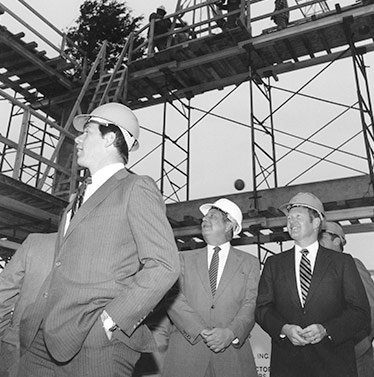
Teamwork
Woodbine is made up of unique, talented individuals who share a deep mutual respect for one another. Our goal as a company is to create an environment that allows our employees to excel as individuals and thrive as a team. Although investment horizons may change, this philosophy governs all decisions as Woodbine strives to create places where people want to be. The “Woodbine Way” mandates an uncompromising standard of excellence that every member of the Woodbine team must uphold and every project must meet.
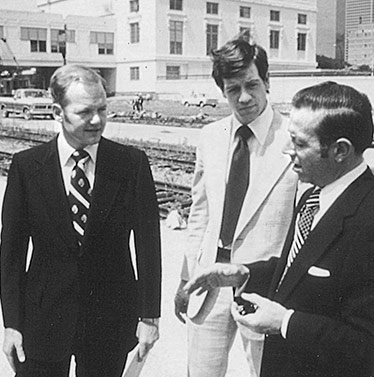
Trust
Very few companies can boast of the enduring industry and partner relationships that Woodbine has enjoyed during its four decades of development. Investment partners have included institutions, foundations, traditional private equity funds and high net worth individuals. Through John Scovell, Woodbine began its partnership with Ray Hunt in 1972. The Hunt family has invested in Woodbine projects since the company’s inception, showing a great trust in Woodbine as stewards of Hunt’s capital and its legacy. This alliance–and many other repeat capital relationships alike–define the trust that Woodbine has earned.
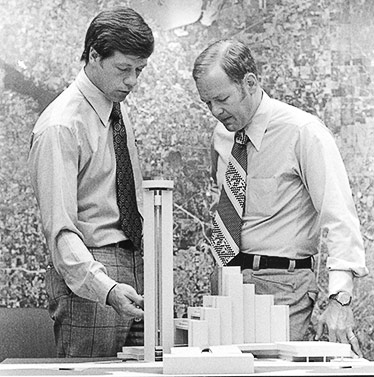
Track Record
Under the direction of a senior leadership team with an average tenure of nearly two decades, Woodbine’s highly disciplined underwriting and conservative investment parameters have generated an average return of greater than 35 percent to its investors since 1972. Woodbine’s hospitality development track record is unparalleled in the industry, including over $3 billion in acquisition, renovation and development projects and 7,000+ hotel rooms, with both major brands (Marriott, Hyatt, Starwood, Hilton and Kimpton) and highly regarded independent operators.

